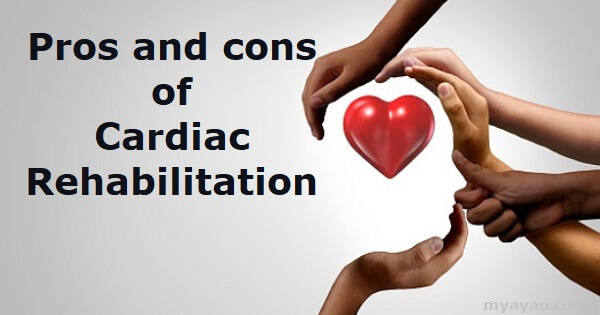The goal of cardiac rehabilitation is to help patients in their recovery from a heart attack, heart surgery, or other heart-related problems. It includes a thorough physical activity program, education, and lifestyle modifications. Cardiovascular rehabilitation aims to assist patients in enhancing their quality of life, enhancing their heart health, and lowering their chance of developing new heart issues.
Exercise Training: A program of controlled physical activity intended to strengthen the heart muscle and enhance cardiovascular endurance.
Education: Information about healthy lifestyle choices, such as eating well, managing stress, and giving up smoking.
Risk Factor Management is the identification and control of variables that increase the chance of developing heart diseases, such as diabetes, excessive cholesterol, and blood pressure.
Psychological Support: Help manage stress and anxiety and the emotional and psychological effects of a heart-related incident.
Medication Management: Evaluating and changing drugs to improve heart health and lower the likelihood of developing future heart issues.
Cardiac rehabilitation is crucial for sustaining long-term heart health and is crucial to the healing process.Cardiac rehabilitation (CR) is a medically supervised program created to enhance the physical and mental health of persons who have undergone heart surgery, had a heart attack, or had other diseases connected to the heart. The following are a few benefits of cardiac rehabilitation:
Cardiovascular fitness, blood pressure, cholesterol levels, and body weight may be improved by cardiac rehabilitation. These advantages can lower the chance of developing new heart issues and assist people in recovering from heart disease.
CR programs offer counseling and emotional support to assist people in dealing with the stress of having a cardiac condition. Moreover, it teaches patients how to control their stress and adopt healthy lifestyle modifications to help them cope with their anxiety and depression.
Is a key component of cardiac rehabilitation programs. These risk factors include high blood pressure, high cholesterol, and diabetes. Addressing these risk factors can reduce their likelihood of developing cardiac issues.
Cardiac rehabilitation programs include instruction on wholesome food, active living, and quitting smoking. These lifestyle modifications can help individuals maintain a healthy weight, lower stress levels, and enhance general health.
Participating in cardiac rehabilitation programs can give people a sense of belonging and support. Connecting with others going through similar things can boost people's mental health and inspire them to keep up good routines.
Cardiovascular rehabilitation has a lot of positives, including better cardiovascular health, a lower chance of future heart attacks, and an improvement in quality of life, but it can also have some drawbacks. Here are a few examples:
Heart rehabilitation often takes multiple sessions each week for a few weeks or months, lasting up to an hour. It may require a major time commitment for individuals with hectic schedules or those living far from a rehabilitation centre.
The cost of cardiac rehabilitation varies depending on the healthcare system and insurance coverage, which may restrict access for some patients.
If the cardiac rehabilitation clinic is far away, patients may have to make expensive and uncomfortable long trips to attend treatments.
Some patients could struggle to maintain their commitment to the programme and their level of motivation, which could reduce the efficiency of the rehabilitation.
Some patients might be unable to participate completely in the rehabilitation programme due to physical restrictions, which can reduce the advantages they gain.
Some patients may struggle to participate in the programme due to psychological issues, including anxiety, depression, or other issues. It's crucial to remember that these possible drawbacks are frequently avoided with careful planning, open communication, and assistance from family and friends. Cardiovascular rehabilitation is a useful technique for enhancing heart health and lowering the risk of further cardiac incidents since, on the whole, its advantages frequently outweigh its possible drawbacks.
Conclusion
In conclusion, cardiac rehabilitation is a medically approved programme that can assist patients in recovering from a heart-related ailment and improving their heart health. Despite certain potential drawbacks such as time commitment, expense, travel, lack of enthusiasm, physical restrictions, and psychological problems, they may frequently be overcome with careful preparation and assistance. Cardiovascular rehabilitation is a useful technique for enhancing heart health and general well-being because of its advantages, which include enhanced cardiovascular fitness, lowered risk of further cardiac events, and improved quality of life. Suppose a patient has undergone heart surgery, suffered a heart attack, or has another problem connected to the heart. In that case, they should talk to their doctor about whether cardiac rehabilitation is appropriate.

Cardiovascular rehab involves making heart-healthy lifestyle modifications with few risks. Rarely, physical exertion during recovery might result in major issues, such as bone or muscular injuries or potentially fatal cardiac rhythm issues.
Following a heart attack, strengthen your heart and body.Alleviating heart disease symptoms like chest discomfort.Developing better behaviours, such as increasing physical exercise, stopping smoking, and following a heart-healthy diet.Lowering anxiety.
Although rehabilitation provides many advantages, it can also negatively affect a patient's attitude, anxiety, discomfort, and boredom.
The Home Based Cardiac Rehabilitation (HBCR) programme utilises telehealth and can be completed at home or in a gym. The programme comprises a planned lifestyle, behaviour adjustment, and supervised exercise.
Cardiovascular rehabilitation programs work to lessen the psychological and physical strains that come with cardiovascular illness, lower the chance of death, and enhance cardiovascular function to help patients live as comfortably as possible.